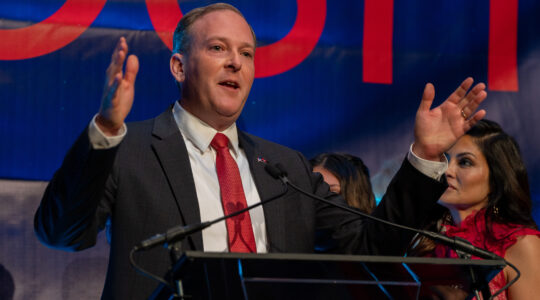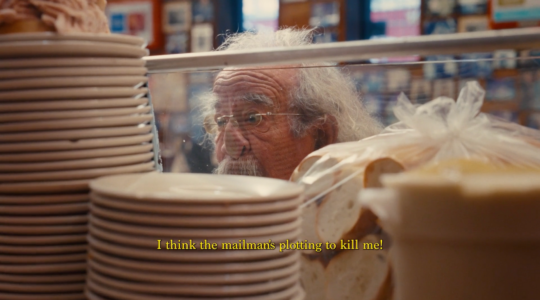Readers will no doubt recall a long-running advertising campaign for a fur company that posed famous women with the slogan, “What becomes a legend most?” Not, we grant, a campaign you’d be likely to see in these more animal-friendly days, but the question is a good one, “What becomes a legend most?”
If the legend is a musician, the answer is simple: play the music. Anything extra is nice, but nearly extraneous.
Of course, if the legend is klezmer giant Dave Tarras, whose legacy is being celebrated at the Museum at Eldridge Street on March 21, a few visuals would not be amiss. His name should be familiar to anyone even remotely interested in Jewish music or clarinet, but the face won’t be.
“We will be showing video footage and photos before the music,” explained Joel E. Rubin, who curated the event and is playing clarinet for the program. “[The Center for Traditional Music and Dance, which is sponsoring the event,] has the only known concert video of Tarras in its archive. It’s a real treasure from a program they presented on November 19, 1978 at the sold-out Casa Galicia [now Webster Hall]. This was the first concert in which Dave Tarras was presented to a general audience … helping to spark the international revival of klezmer music.”
In fact, that concert was “the first public program to be advertised using the term ‘klezmer,’” according to the center’s director, Pete Rushefsky. “Before this, musicians commonly talked about the music as ‘Jewish wedding music,’ or ‘the freylekhs.’ The 1978 series caught fire with audiences and the term ‘klezmer’ [a somewhat derogatory Yiddish term for wedding musicians] became recognized around the world as the moniker for this important musical genre.”
Rubin represents both sides of the klezmer coin and is uniquely well suited to talk about Tarras and his music. On the one hand, he is a highly trained ethnomusicologist whose doctoral dissertation was on the music of Tarras and his coeval and fellow legend Naftule Brandwein. But Rubin is also a terrific clarinetist, one of the founders of Brave Old World and currently the leader of his own band, the Joel Rubin Jewish Music Ensemble. He was an obvious choice for this gig.
“He’s done a number of stellar recordings of Tarras’ music, and Joel has also done pioneering work with klezmer music collected by the An-sky Expedition and Beregovsky in pre-war Ukraine,” Rushefsky says, highlighting the dual role that Rubin fills. “By juxtaposing this earlier European repertoire with music Tarras composed and popularized in New York we’ll be able show how he shaped a uniquely American musical form.”
Tarras was already a highly skilled musician when the Ukraine-born clarinetist came to the United States in 1921 at the age of 26. He quickly built an impressive reputation, surpassing Brandwein and the third major clarinet voice in popular Jewish music, Shloimke Beckerman.
In a recent e-mail, Rubin elaborated on Tarras’ New World career path.
“He was active as a sideman with bands led by Alexander Olshanetsky, Abe Ellstein, Abe Schwartz, Joseph Cherniavsky and others; as a band leader in his own right; as a musician in pits of the Yiddish theater, a recording artist and radio star,” Rubin wrote.” Dave’s style — very personal and instantly recognizable — became the paragon of the younger generation of American-born klezmer clarinetists such as Max Epstein, Sam and Ray Musiker and Danny Rubinstein, all of whom adopted his more polished, technically oriented style. Dave was the most prominent member of a generation of musicians who transformed klezmer music in America with new compositions influenced by contemporary Greek, Romani and Moldavian music as well as by the popular songs of the Yiddish theater.”
He was also at the forefront of the integration of swing elements into klezmer, evidence of which can be heard on many of his recordings from the ‘40s and after. And he was a key figure — as role model, teacher and institutional memory — in the klezmer revival of the ‘70s and after.
Tarras is one of those figures who is remembered fondly by almost anyone who worked or studied with him. Rubin corresponded with Tarras, although the two never met face to face. But the younger man spoke warmly of his predecessor’s reputation.
Support the New York Jewish Week
Our nonprofit newsroom depends on readers like you. Make a donation now to support independent Jewish journalism in New York.
“Dave was known as a great bandleader who fought for the rights of his musicians,” he wrote. “He was known to throw a table over at a banquet if his musicians didn’t get fed the same thing as the other guests. He was a serious musician who would stop playing in the middle of a solo if the room wasn’t quiet.”
What, ultimately, is the Tarras legacy? Rushefsky’s answer is a useful one; after all, he’s not a clarinetist.
“You can’t play klezmer today and not find yourself running into Dave Tarras at every turn,” he replies. “Whether you’re actively working with his American repertoire, creating new contemporary Jewish music or consciously trying to work with musical forms that predate Tarras,” Rushefsky says, “he’s in your consciousness as the prime meridian of whatever klezmer longitude you’re navigating towards.” n
“The Tarras Legacy: Celebrating the King of American Klezmer Music,” a multimedia concert featuring Joel Rubin, with Pete Rushefsky, Dave Licht and Art Bailey, will take place on Sunday, March 21, 3 p.m. at the Museum at Eldridge St. (12 Eldridge St.), presented by The Center for Traditional Music and Dance’s An-sky Institute for Jewish Culture and the Museum at Eldridge Street. Rubin will give a special master class for reed players at 1 p.m. For information, call (212) 219-0302 or go to www.eldridgestreet.org.
The New York Jewish Week brings you the stories behind the headlines, keeping you connected to Jewish life in New York. Help sustain the reporting you trust by donating today.




